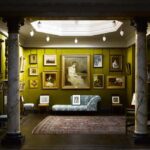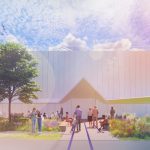Charleston Museum Building, Architecture Project News, Design, England Property
Charleston Museum East Sussex
Redevelopment in East Sussex design by Jamie Fobert architects, England, UK
Charleston Museum
Contest: 2009
Location: Firle, East Sussex
Approx. Budget: £3.5m
Charleston Museum redevelopment winner
Jamie Fobert with Julian Harrap
The Bloomsbury Group’s country home between Brighton and Eastbourne with a highly decorated interior.
Charleston Museum redevelopment shortlist
6a Architects
Caruso St John
Dow Jones Architects
Haworth Tompkins
Jamie Fobert with Julian Harrap
Purcell Miller Tritton
Tony Fretton Architects
Client: The Charleston Trust
Status: Listed Grade-II
Entries: 115
Funding: Heritage Lottery fund
Charleston Museum – Entry by Dow Jones Architects
The word context is derived from the verb ‘to weave’. We are proposing an intervention that both weaves into the existing fabric of the place, and serves to stitch together the different elements of the museum.
We are proposing to do this through bold and contemporary re-use of vernacular form and indigenous materials.
View from hillside ; Approach ; Auditorium ; Axonometric
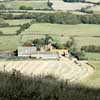
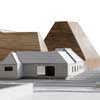
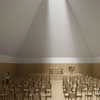
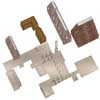
Charleston has existed as a group of agricultural buildings for at least the last 500 years. Its inhabitation by the Bloomsbury Group for most of the last 100 years has marked it as an extraordinary place, telling the story of the lives of a group of artists in the most direct and intimate way.
We are proposing to choereograph the visitor’s experience around a re-formed stableyard. Configured as a cloister, this space holds together the new and existing elements of the visitor facilities in an ordered and coherent manner.
Our proposal adapts existing buildings, adds new ones and creates a public landscape to accommodate the programme whilst respecting the character of the place. Charleston Farmhouse remains a unique and complete work of art, and our proposal extends the visitor’s experience while maintaining the integrity of the house.
We enjoy the directness with which the Bloomsbury Group took possession of the places they occupied – making, painting, weaving in the buildings and open spaces around them.
Our proposal adapts the buildings surrounding the farmhouse to make new spaces for the creation and display of art, continuing the pattern of use started by the Bloomsbury Group.
We make buildings which are both calm and generous and which, through careful consideration of place, draw your attention to situations and experiences. We liken this to the description of poetry by Paul Roche, close friend of Duncan Grant, as ‘awareness heightened’. In ‘Contemporary Poets’ he writes, “It is a way of apprehending the intensity of being. I try to recreate experience more intensely, reduce it to a luminous whole, render intuitive the meaning and metaphysics of the universe”.
The buildings we are proposing weave into the fabric of Charleston, responding to the place both culturally and topographically, and provide the context for art, not the art itself.
Site Model ; Studio ; Gallery ; Classroom


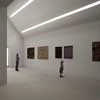
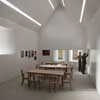
We are proposing to make a coherent group of buildings around the farmyard, by adding three new buildings and adapting existing ones. These are organised around the stableyard and barnyard, and are connected by a covered cloister.
The new buildings have strongly emphasised roofs, which resonate with the surrounding geological and agricultural forms. They are mounded-up and shelter-like as an old farmstead. Seen from Firle Beacon, they join Charleston in a landscape of tall roofs, creating a palpable sense of enclosure on the lee side of the South Downs.
The Downs form a looming presence. Their chalk structure is revealed as bright white paths incised through use. We are proposing to form new ground in a similar vein, marking a new place as a smooth and luminescent chalky ground. This ground draws together the buildings around the site, forming the paths and courtyards as well as the ground upon which the buildings sit.
While the new buildings each have their own character, they are clearly part of a family. They are identified by their shared formal expression with emphasised roofs acting as light funnels, and by a shared mode of construction, with structural timber frames cloaked in chestnut shingle.
We are proposing shingle cladding because it forms part of the language of expedient cladding demonstrated in the construction of the existing buildings; we enjoy the way that shingle cladding allows a smooth juncture between planes, allowing an abstracted expression of form. The buildings have large windows capturing particular views, and a shared language of timber detailing for joinery: cupboards, doors, seats. All the buildings are drawn together around a shared territory of outdoor spaces – the barnyard and the stableyard – for art, for gatherings, for catching time.
This territory is characterised as a smooth chalky white concrete ground made with limestone aggregate, recalling the chalky ground of the site. It forms the ramps and paths connecting the buildings as well as the internal floors within, describing the place of inhabitation. A cloister connects the buildings in the stableyard, ensuring ease of use in wet weather, and identifying routes. It is formed as a white pre-cast concrete structure, made from the same concrete mix as the ground, with a glazed roof to form a light-filled path.
Charleston Museum images / information from Dow Jones Architects
Jamie Fobert + Julian Harrap Architects
Contact: 01323 811265
Address: Charleston Museum, Charleston, Firle, Lewes, East Sussex, BN8 6LL, England, UK
English Architecture
Contemporary Architecture in England
English Architecture
Swiss Re Building – 30 St Mary’s Axe
Design: Foster + Partners

photo © Adrian Welch
, Littlehampton, West Sussex
Design: Heatherwick Studio
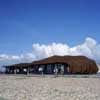
photo : Andy Stagg
Littlehampton Building
Comments / photos for the Charleston Museum England Architecture page welcome

